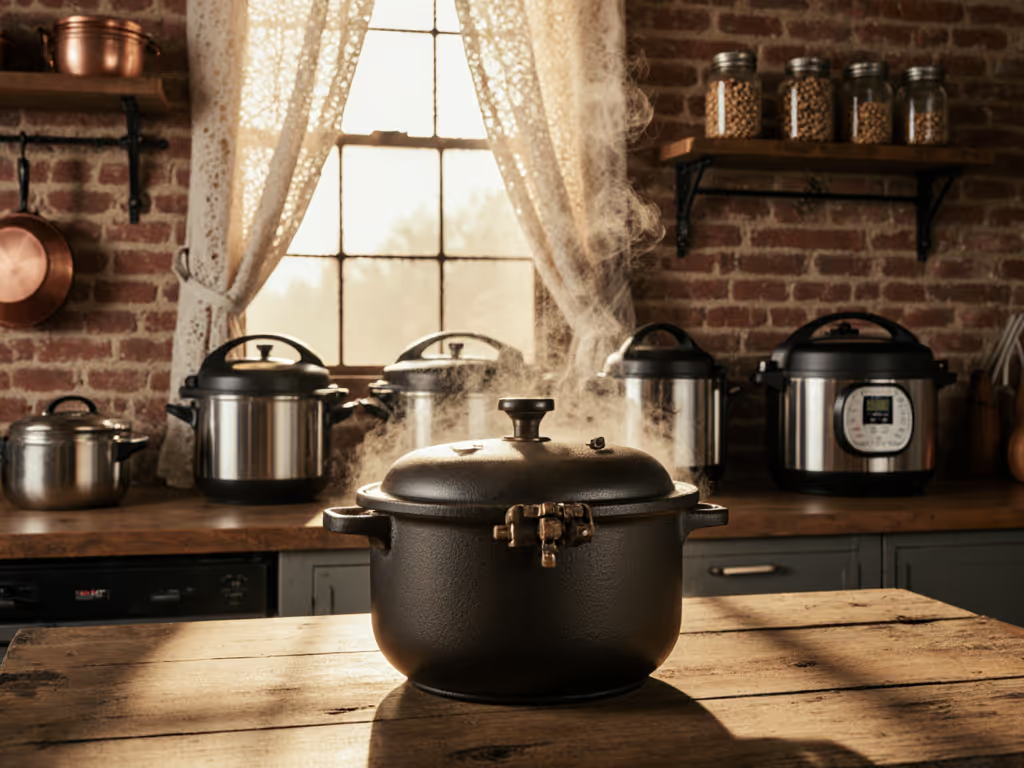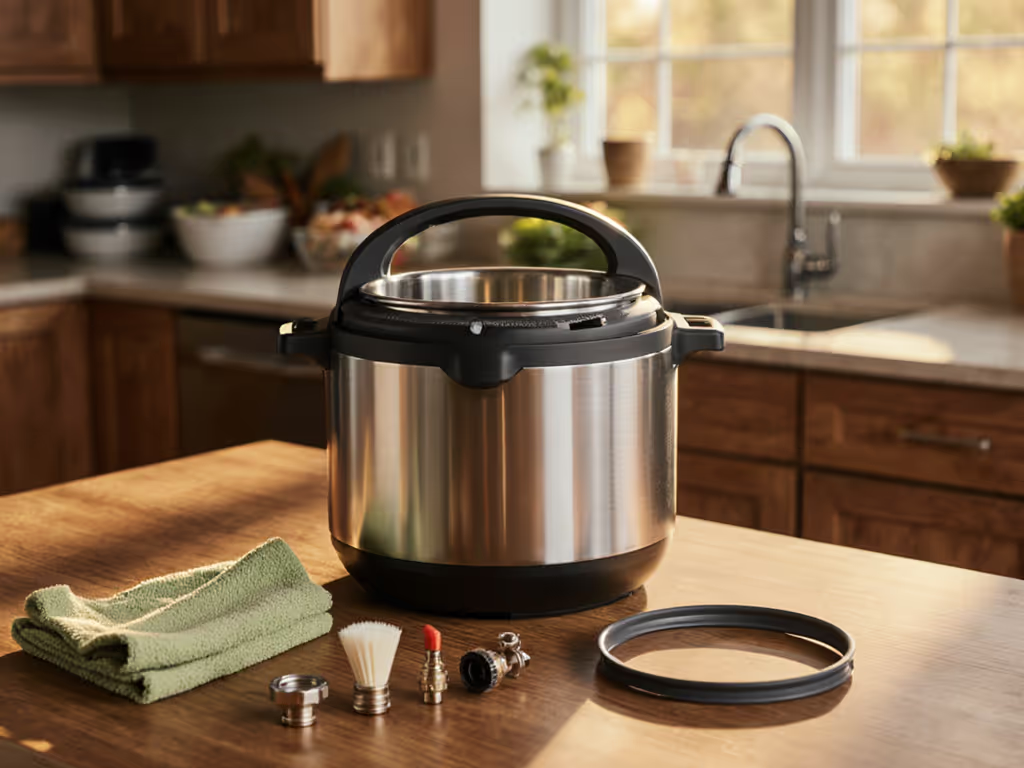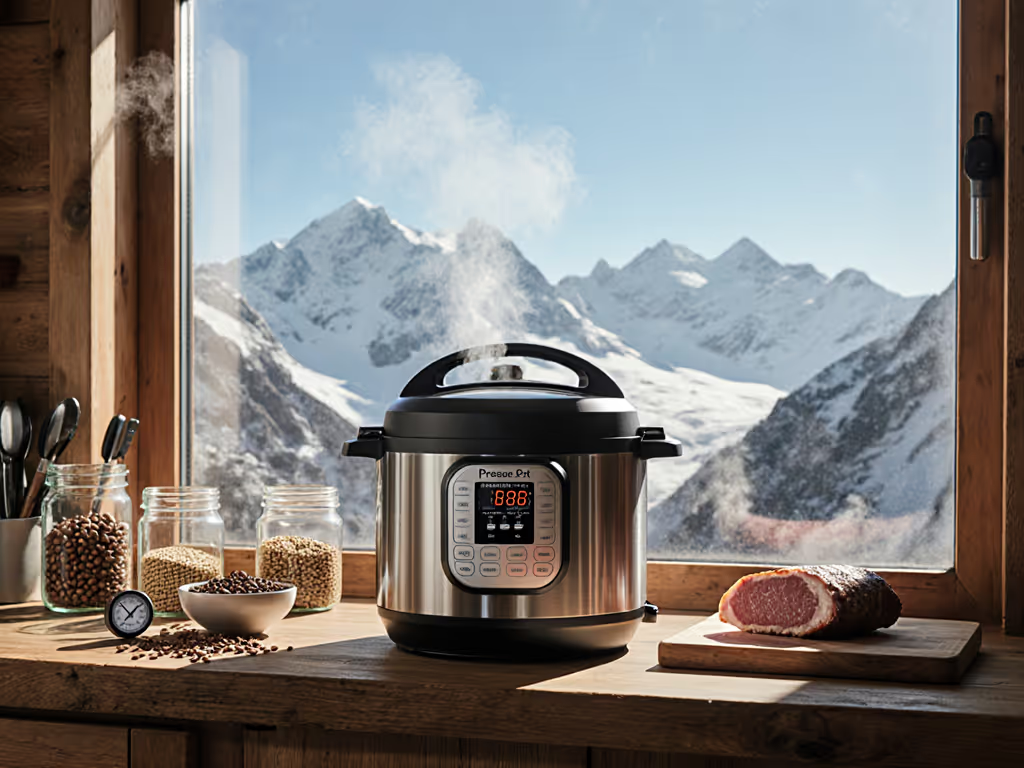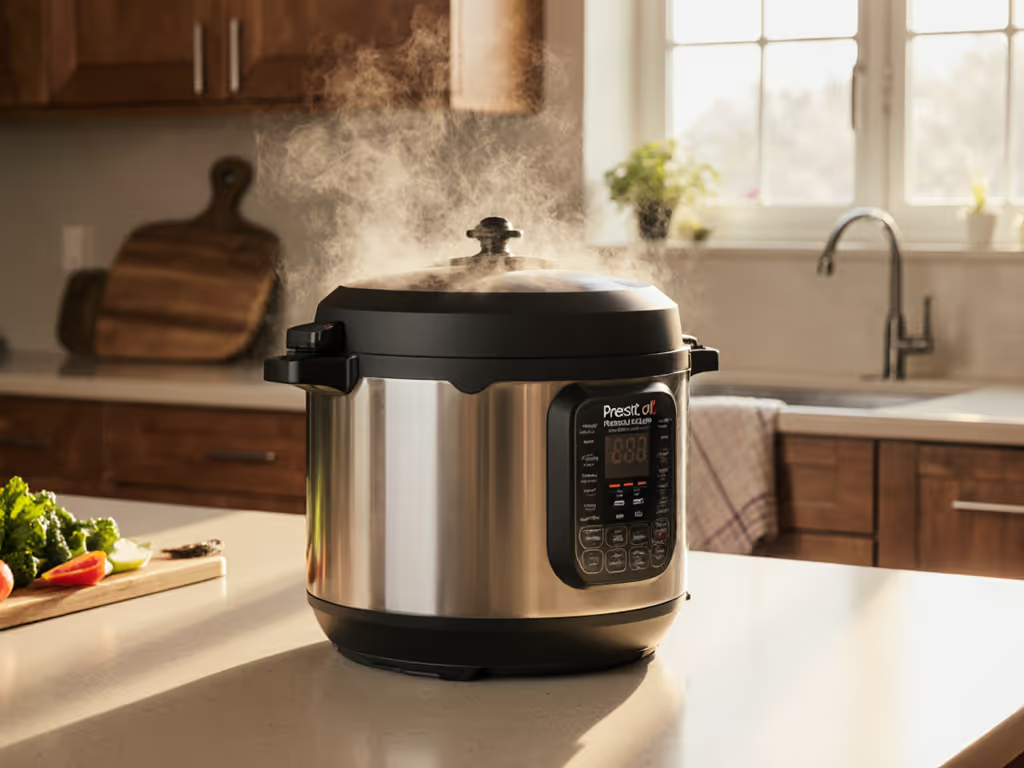
History of Pressure Cooking: From Dangerous Digester to Safe Essential

When you hear the whistle of a pressure cooker, you're hearing centuries of safety mechanism development working in your kitchen. The history of pressure cooking isn't just about faster meals, it's a story of how reliability triumphed over risk. As someone who's tallied the true cost of kitchen disasters, I've learned that pressure cooking evolution mirrors our collective demand for tools that work consistently, not just flashily. Like the time I calculated that my $150 multicooker's early failure cost me more in gaskets and shipping than a durable stovetop model would in a decade. The math is blunt: repairable parts beat fancy modes. Today's timeline shows exactly how pressure cookers evolved from liability to reliable essential.
The Pressure Cooking Timeline: From Danger to Dependability
1. 1679: The Dangerous Birth of Pressure Cooking
French physicist Denis Papin's "steam digester" was the first serious attempt at pressure cooking, but its lack of safety features made it effectively a controlled explosion waiting to happen. Without proper pressure release systems, these early models could (and did) launch lids across rooms. This painful safety lesson still matters today: when you're choosing your next cooker, always check if replacement safety valves are readily available. A model without accessible parts turns into a landfill statistic faster than you can say "burn notice."
2. Early 1800s: Safety Mechanism Development Begins
The first meaningful pressure cooker timeline milestone came when engineers added weighted regulators, the ancestors of today's jiggler valves. These simple devices released excess steam automatically, preventing catastrophic failures. This fundamental innovation remains vital: when testing a cooker, watch how smoothly the weight releases pressure. Jerky motion signals potential failure points. I've seen too many people overlook this basic check, only to waste ingredients when inconsistent pressure ruins a $20 batch of dried beans.
3. 1864: Cast Iron Enters the Scene
Georg Gutbrod of Stuttgart began manufacturing tinned cast-iron pressure cookers, the first durable models home cooks could trust. These heavyweights translated prices into countless reliably cooked meals rather than expensive replacements. Modern stainless steel models follow this same principle: the right investment yields hundreds of meals before needing replacement parts. When comparing models, weigh initial cost against expected meals, it's the ultimate price-to-performance calculator.
4. 1910-1917: The Safety Standardization Era
Zeno Crook's Denver-based "Pressure Cooker Company" introduced the first practical aluminum models for high-altitude cooking, while the USDA established pressure canning as the only safe method for low-acid foods. This standardization created the reliability we expect today: when your cooker maintains consistent pressure, you're benefiting from century-old food safety protocols. Always verify that your model meets current USDA canning standards, because your family's health depends on this non-negotiable feature.
5. 1939: The World's Fair Breakthrough
The "Presto" cooker unveiled at the New York World's Fair introduced the interlocking lid system that eliminated awkward clamps. This simple innovation made pressure cooking accessible to non-engineers. Today's multi-use pressure cooker designs still build on this philosophy: the best features solve real problems, not imagined ones. When shopping, use simple checklists to separate must-have reliability features from nice-to-haves that add cost without value. Can the lid lock securely without force? Does the handle stay cool? These basics matter far more than digital displays.
6. 1945-1950s: Post-War Boom and Bust
After WWII, production resumed and pressure cookers became kitchen staples, until frozen dinners and nouvelle cuisine pushed them aside. This cycle teaches us something vital: when a tool disappears from stores, check parts availability before buying. The vintage cooker collecting dust in Grandma's attic might be a liability if seals aren't manufactured anymore. I've flagged recurring part costs for readers before, it's pointless to save $50 upfront if gaskets run $15 each with no replacements.
7. 1988: The Modern Renaissance
Lorna Sass's "Cooking Under Pressure" reignited interest with approachable recipes that emphasized consistent results over culinary acrobatics. This return to fundamentals matters today: the most reliable electric models still prioritize pressure accuracy over programmable bells and whistles. When assessing pressure cooker advancements, remember, value beats novelty every time. The $80 stovetop model that cooks perfect beans batch after batch delivers better price-to-performance than the $150 model that fails after the warranty expires.
8. 2000s-Present: Modern Pressure Cooking Innovations
Contemporary cookers integrate precise temperature control and multiple safety redundancies, but the most important advancement has been standardization of repairable parts. Look for models that plainly label must-have vs nice-to-have features: like replaceable sealing rings that cost $5 instead of integrated systems requiring full replacements. I've calculated that proper maintenance extends a cooker's life by 3-5 years, translating prices into hundreds of additional meals before replacement.
Why This History Matters for Your Kitchen Today
The pressure cooking evolution teaches us that safety and reliability aren't accidental, they're earned through hard lessons. Your current cooker's ability to make perfect rice without burning isn't magic; it's 300 years of engineering refinement. But even modern models fail when we ignore basic maintenance protocols.
Value shows up in leftovers, not launch-day hype.
Before your next pressure-cooked meal, run this quick safety checklist I've developed from decades of cost-conscious cooking:
- Seal check: Is the gasket pliable with no cracks? (Replace annually or after 500 uses)
- Vent verification: Does steam release smoothly without sputtering?
- Liquid minimum: Always use at least 1 cup liquid, never guess
- Fill line: Never exceed ⅔ capacity for grains/beans (½ for foamy foods)
- Pre-heat patience: Wait for full pressure before timing begins
When you translate prices into cost per successful meal, the most expensive model often costs less long-term. But only if you maintain it properly and avoid models without parts support. Remember that multicooker I returned? I've since fed my family hundreds of meals on a $70 repairable stovetop model, proving that affordability plus reliability beats features you won't use.
Your Next Step: Build Confidence Through Understanding
Don't just use your pressure cooker, understand it. This weekend, take 15 minutes to disassemble and clean your sealing ring, then test the pressure release mechanism with water (no food). Note how smoothly the valve operates and whether the gasket seals properly. This simple maintenance ritual prevents 90% of "BURN" errors and inconsistent results. For step-by-step care and inspection tips, follow our pressure cooker maintenance guide. Check your model's parts diagram online, and verify that replacement components are available before your next big batch of dried beans. For precise times and no-soak techniques, see our pressure cooker bean guide. When you treat your pressure cooker not as a mysterious appliance but as a reliable tool with known failure points, you'll cook with confidence instead of anxiety. Because in the end, value beats novelty, not just as a saying, but as a mathematically verifiable kitchen truth.
Related Articles




Mastering High Altitude Pressure Cooking Adjustments
Cook confidently above 3,000 feet with practical pressure cooker tweaks - prioritize natural release, fine‑tune time and liquid, control foaming, and check seals - for safer results and better texture. Skip PSI myths and apply physics-backed adjustments for beans, grains, meats, and dairy.

Pressure Cooker Basics: Safe First-Time Use Guide
Master a safe, predictable pressure-cooking routine: budget for preheat and release, respect fill lines, use QR vs. NR correctly, and confirm zero pressure before opening. Get usability checks for electric vs. stovetop and simple gasket care to prevent burns and “BURN” errors.
